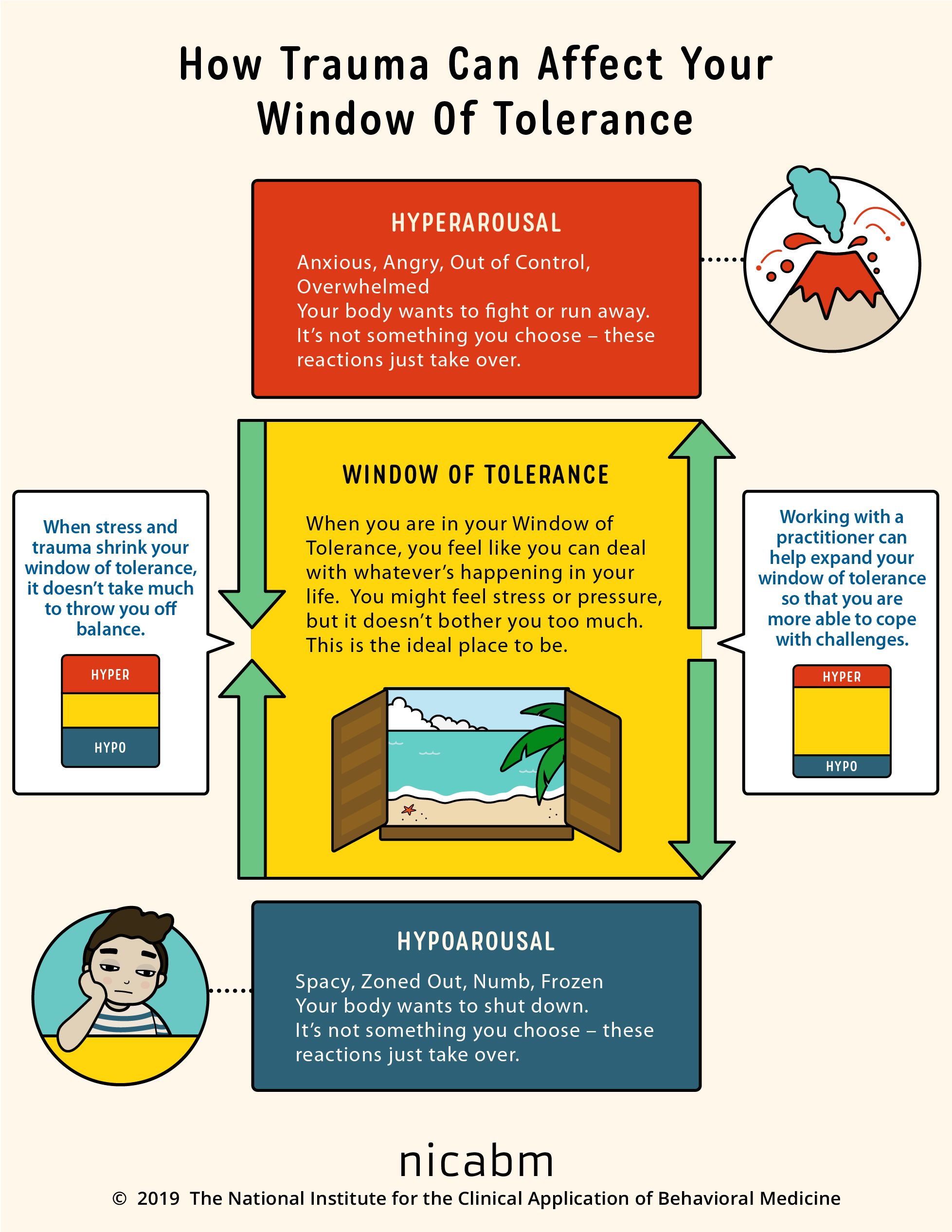Understanding the “window of tolerance” in trauma recovery

For survivors of trauma, recovering involves learning how to cope with distress and how to increase the capacity for positive and enjoyable experiences.
A common framework psychologists use while working with trauma survivors is called the “window of tolerance”.
Understanding our personal windows of tolerance can help us respond to demands of daily life and utilise different strategies to return to it during stressful moments.
What is the window of tolerance?
Coined by psychiatrist Dan Spiegel, the window of tolerance describes a state of arousal where a person can function well and respond to stimuli with much difficulty.
In this state, a person is likely able to think rationally, reflect, and make decisions without feeling overwhelmed.
When a person experiences extreme stress, they can leave this window and enter a state of hyper- or hypo-arousal.
Hyper-arousal is also known as the fight or flight response, with a person usually experiencing hypervigilance, anxiety or panic, and racing thoughts.
In contrast, hypo-arousal is the freeze response, where someone may feel emotionally numb, empty, or paralysed.
Being in either of these states can mean that a person is unable to effectively process stimuli.
They may be unable to think as rationally and can feel dysregulated.
Everyone’s window of tolerance is different and can be affected by their environment - such as how supported they feel - and trauma.

Image: NICABM
When a person feels supported and safe, they are generally able to stay in their window of tolerance.
For those who have experienced trauma, the experience may “push” a person out of their window of tolerance, or make it much more narrow or inflexible.
This can result in someone responding to even minor stressors with extreme hyper- or hypo-arousal, or believing the world is unsafe.
Frequently staying outside the window of tolerance can result in an individual experiencing mental health issues such as depression and anxiety.
Manage mental health with the window of tolerance
People who feel dysregulated and often stay outside of their window of tolerance can return using a few different techniques.
Practicing grounding and mindfulness skills can often help people be present and in the moment.
With the help of a mental health professional, it is also possible for a person to expand their window of tolerance, feel a greater sense of calm, and become better equipped to deal with stress.
Therapy can provide individuals with a safe space to process trauma and other painful memories, as well as a place to practice emotional regulation.
Image: Getty Images
